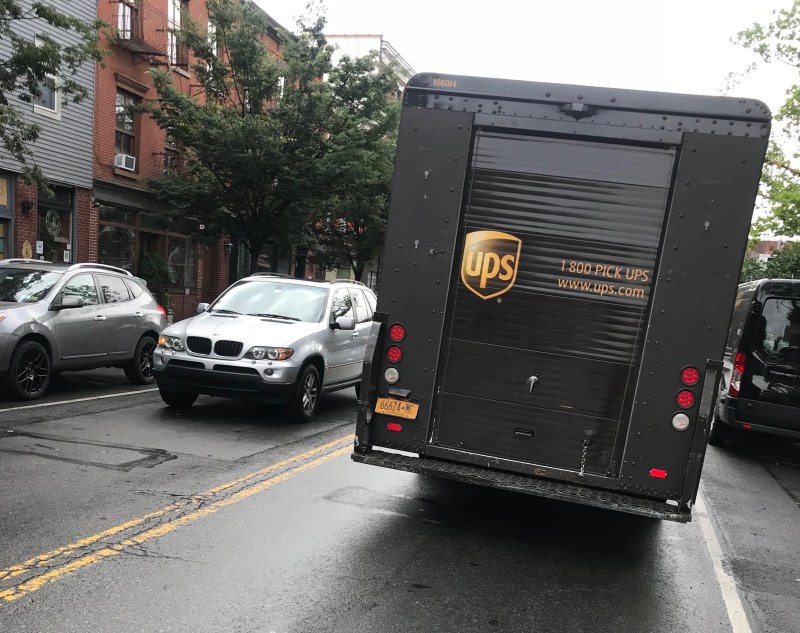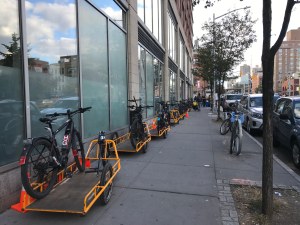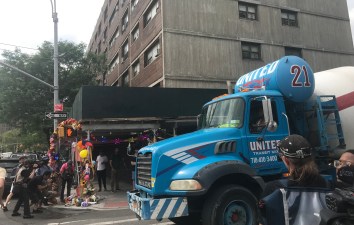Help Wanted: Send Us Your Pictures Of Dangerous Double-Parking By Delivery Trucks
Residential communities are being choked by trucks hauling packages from Fresh Direct, Amazon, Zappos and other companies that didn't exist 30 years ago — and our streets have not adapted.

Residential streets are no place for double-parked trucks, which endanger cyclists and also block the flow of car traffic (which endangers cyclists further).
The villains, of course, are the delivery companies: FedEx, UPS, United States Postal Service, DHL, Fresh Direct and others routinely double-park on residential streets. We have met the enemy, and it is them.
But it’s also us: As customers, we placed the orders and now we want our stuff. And when the truck rolls up, there’s no place for it to park because car owners have appropriated both sides of the street for free vehicle storage.
I’ve spent years fuming at delivery trucks for blocking a bike lane or endangering me on a side street, snapping photos like these:


I tweet at the companies, which sometimes ask me for the location of my photos. But they never answer the question: Is it company policy to encourage drivers to double-park, which is almost always illegal?
And I never received an answer from @UPS or @UPSHelp about yesterday, so I’ll offer today’s outrage and ask again: Does UPS tell its workers that it is illegal to double-park and that they should not do it? pic.twitter.com/Iv7YtpR1nt
— Gersh Kuntzman (@GershKuntzman) July 3, 2018
Of course I’m sensitive to hard-working delivery people doing their jobs. So let’s make it easier for them: residential neighborhoods are getting more and more packages, so residential streets need the kind of loading zones as commercial districts.
I’m going to be pursuing this issue over the next few weeks — exploring roadway design, company policies, parking statistics, the NYPD’s misplaced priorities, and, of course, the city’s infamous Stipulated Fine Program program — but for now, I need your help documenting the problem. Next time you see a delivery truck illegally parked, take a picture and send the photo and details to me at tips@streetsblog.org. Or just post on Twitter with the handle #loadinglosers.
For now, I’ll leave you with another photo (I got a million!):


